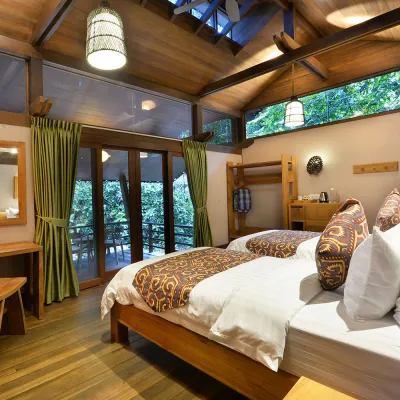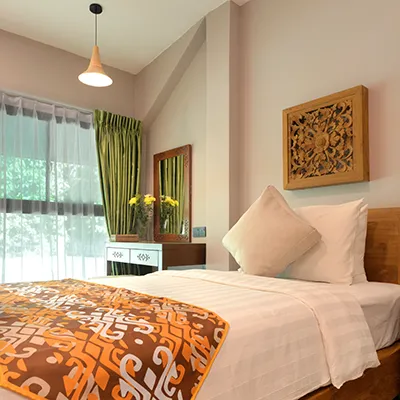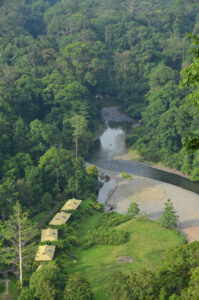
If you want to really get back to nature, Borneo is your place. It’s a nature lover’s dream whose rich and varied landscapes of rainforest, jungle, seashores, islands, rivers, mountains and mangrove forests is home to a myriad species of flora.
Charles Darwin once described Borneo as “one great luxuriant hothouse made by nature for herself” and today’s Borneo is a huge botanical garden said to be home to over 15000 species of plants.
In the island’s coastal and mangrove forest, dipterocarp forest, and heath forests and limestone forests you can view mengaris trees that tower up to 90 meters into the air, carnivorous Nepenthes plants, the world’s largest flower and several thousand species of orchid, to cite just a few.
The good news is that unlike in Darwin’s day, modern Borneo is easily accessible with modern cities and much of the hinterland organized into national parks and conservation areas. This makes visiting a convenient and stress-free experience.
Here are some of the most interesting trips to view Borneo’s natural bounty.
Sabah
A short journey from the modern state capital Kota Kinabalu lies Kinabalu Park. A world heritage site covering 750 square kilometers, it’s home to the area’s highest mountain, Gunung (Mount) Kinabalu, and the famous Poring Hot Springs, as well as being a repository of myriad flora.
Many of the flora are endemic to Borneo such as the famous Rothschild’s Slipper Orchid which grows wild on Mount Kinabalu. This rare and expensive flower takes up to 15 years to blossom.
All in all, the park features over 1000 species of orchid together with variegated species of fern, rhododendron, fiscus, palm, bamboo, ginger and the Nepenthes – the carnivorous pitcher plants.
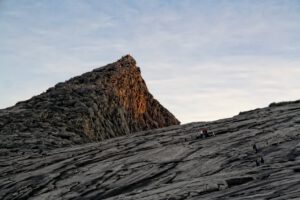
To experience a changing vista of plant life try ascending Mount Kinabalu which takes you from the dipterocarp forest of the lowlands passing up through montane forests to the meadows and bushes around the summit.
An interesting side trip is a visit to the Sabah Tea Garden, one of the world’s few organic tea farms. Here you can admire the aromatic tea plants and sample fine teas.
Another major flora landmark is the Maliau Basin known as Sabah’s “Lost World”. It stands on a site of 600 square kilometers in Tawau in the south central part of the state.
The basin mainly consists of lower mountain forests with stately agathis trees, oaks, laurels and conifers and is home to a rich array of flora including ant plants, rhododendrons and pitcher plants.
As one of the world’s few undiscovered regions, new species of plant are constantly being found here.
Sarawak
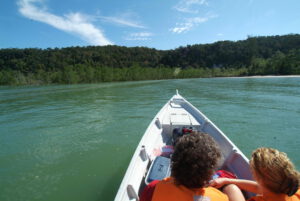
The state of Sarawak is home to several major national parks which offer a quick and easy way to view the local flora.
A few hour’s drive from state capital Kuching stands Bako National Park. A modest 27 square kilometers in area, it’s home to just about every type of vegetation indigenous to Borneo including several varieties of carnivorous pitcher plant and an array of wild orchids.
The main attraction at Sarawak’s Gunung Gading National Park the Rafflesia, the world’s largest flower. This carnivorous marvel can grow up to one meter in size and emits a stench of rotting meat to attract insects, its prey.
Danum Valley Conservation Area in eastern Sabah is perhaps the jewel in the crown of local nature spots. It’s a treasure trove of vegetation with countless species of plant living in its 438 square kilometers of pristine rainforest alongside the Danum River.
So whether you have a special love for orchids or trees or just delight in flora in general, you’re sure to find a Borneo nature tour to suit your needs. Or mix and match with trekking and scuba diving tours depending on your interests.


